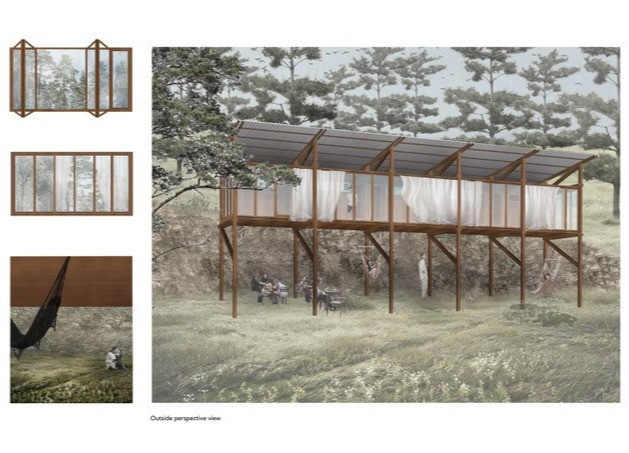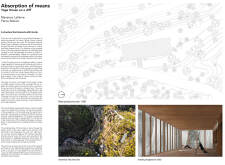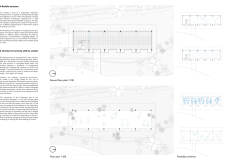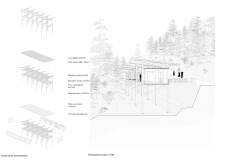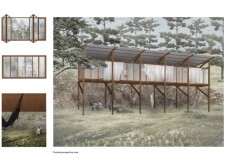5 key facts about this project
The Yoga House on a Cliff, designed by Maxence Lelièvre and Pierre Robion, is located in the tranquil Vale de Moses. It serves as a space for yoga and meditation, emphasizing a close relationship with the natural environment. The design concept centers on harmony with the landscape, allowing users to connect with both the building and their surroundings.
Architectural Integration
The design fits into the landscape without dominating it. Instead of standing out, it enhances the beauty of the area. The building functions as a way for users to engage with the natural setting. This connection is vital, encouraging a sense of peace and reflection as practitioners immerse themselves in nature.
Spatial Configuration
The yoga room is raised on stilts, creating a strong connection with the landscape below. Access is through a footbridge that allows a gradual transition from outside to inside. This positioning gives occupants sweeping views of the scenery, enriching their practice and promoting an atmosphere of calm.
Materiality and Structure
The structure is lightweight, supported by a framework that allows for flexibility in how spaces are used. Large windows on multiple sides invite plenty of natural light. The choice of materials includes wood, specifically identified as potentially pine, and corrugated sheet metal for the roof. These materials are chosen to reflect local building traditions and environmental considerations.
Sensory Engagement
Natural elements are central to the user's experience. Wind, rain, and light are key features of the design. The placement of the windows makes it easy for users to feel and observe changing conditions. This interaction with the environment deepens their connection to the site and enriches the experience of practicing yoga.
In the yoga room, expansive views framed by the large windows create a setting that promotes mindfulness. The details, such as how light filters through the space and the visual connection with the landscape, help cultivate a deeper awareness of nature during practice.


